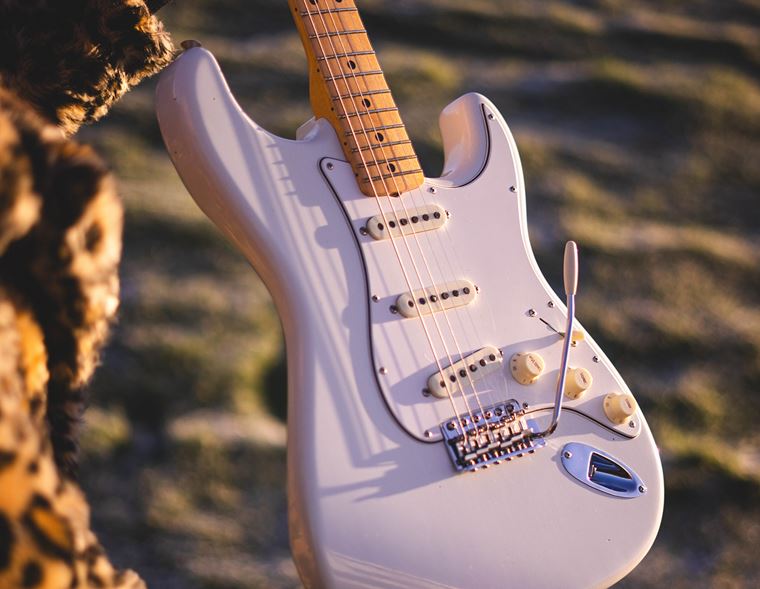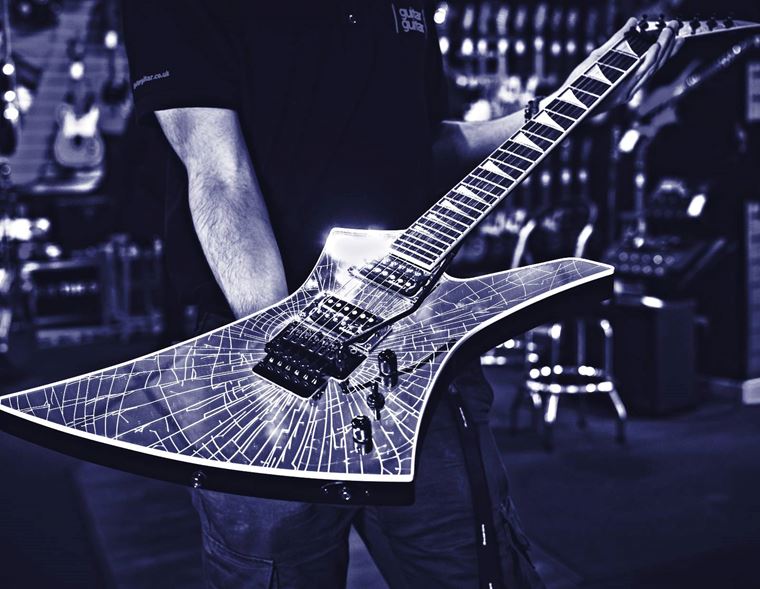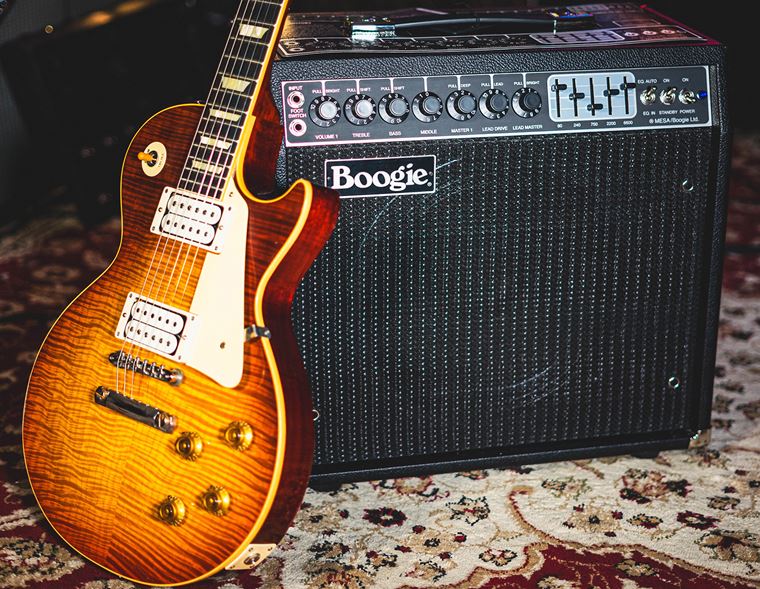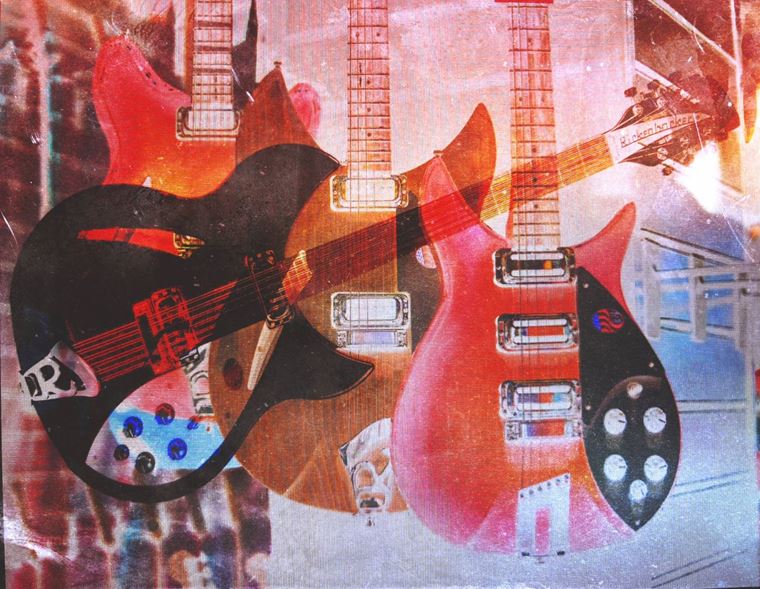Acoustic Guitar Pickups Explained
Published on 17 May 2024
Are you looking to play an acoustic guitar on stage? Maybe you feel like getting more from your treasured acoustic, and are thinking of having a pickup system fitted?
Perhaps you’re just curious about all the different terms you keep hearing, like ‘piezo’ and ‘contact mic’ and feel like finally knowing what they all mean?
Whichever of these questions resonate with you, my aim today is to provide you with answers: simple, straightforward answers.

As a guitarist and performer since my early teens, I’ve played a large variety of acoustic guitars in a number of live situations. As a guitarguitar team member, I’ve sold hundreds of acoustics, played hundreds more, and also had the good fortune to chat about acoustic guitars with some amazing people from Gibson, Martin, Fenech and many other companies. Rest assured, I’ve done the legwork on this, and you can trust my point of view on the subject.
Shall we commence?
Contents
What is an Acoustic Guitar Pickup?
Combinations, Dual Pickup Systems
What is an Acoustic Guitar Pickup?
Let me first begin with a simple clarification on what I’m talking about today. With electric guitars and basses, when we talk about pickups, we’re referring to magnetic devices that ‘pick up’ the vibration of a string. These objects sit on the face of the instrument, directly under the strings. So far, so obvious, right? The only reason I’m being so basic about this is because with acoustic guitars, things aren’t quite so obvious...
An acoustic guitar pickup - for the purposes of today’s blog - is any device (or collection of devices) that can be one way or another attached to an acoustic guitar in order to ‘pick up’ its sound and take it to an amplifier or mixing desk & PA system.
Unlike electric guitars - where the purpose of pickups and amplifiers is to change the sound for the better (your unplugged Strat doesn’t sound like a roaring Marshall amp, right?) acoustic guitar amplification sets out to retain as much of the authentic original guitar sound as possible. The closer to ‘real’ it sounds, the better it’s perceived to be doing its job.
It’ll often be the case that you never really see an acoustic guitar pickup: at most, you’ll interact with the controls onboard the preamp (I’ll get to that), but the pickups themselves - and there are a few types on the market - tend to remain invisible to us during everyday use, hidden inside the body.
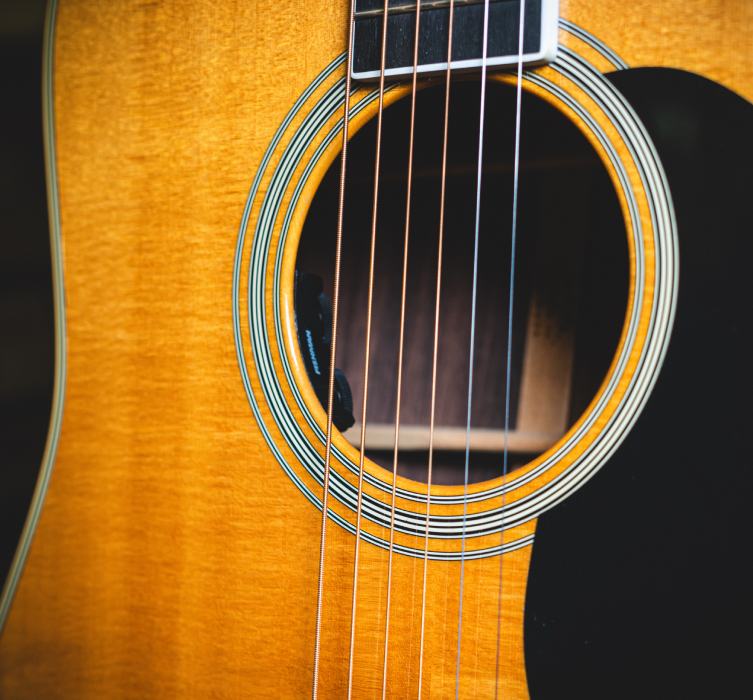
Acoustic pickup Preamps
When I talk about a ‘pickup system’, it’s because most acoustic guitar pickups don’t work on their own: they require an accompanying preamp in order to work, and the pair are sold together as one ‘pickup system’. The preamp is normally the device that the control knobs are on, so it’s the bit you’ll interact with. The pickups will be elsewhere on the guitar, and their signal (the notes you play) will go through the preamp, which will normally boost the signal’s strength enough to make it a bigger, more audible signal. It’ll also shape and form the tone according to its circuitry and whatever you do with the tone controls.
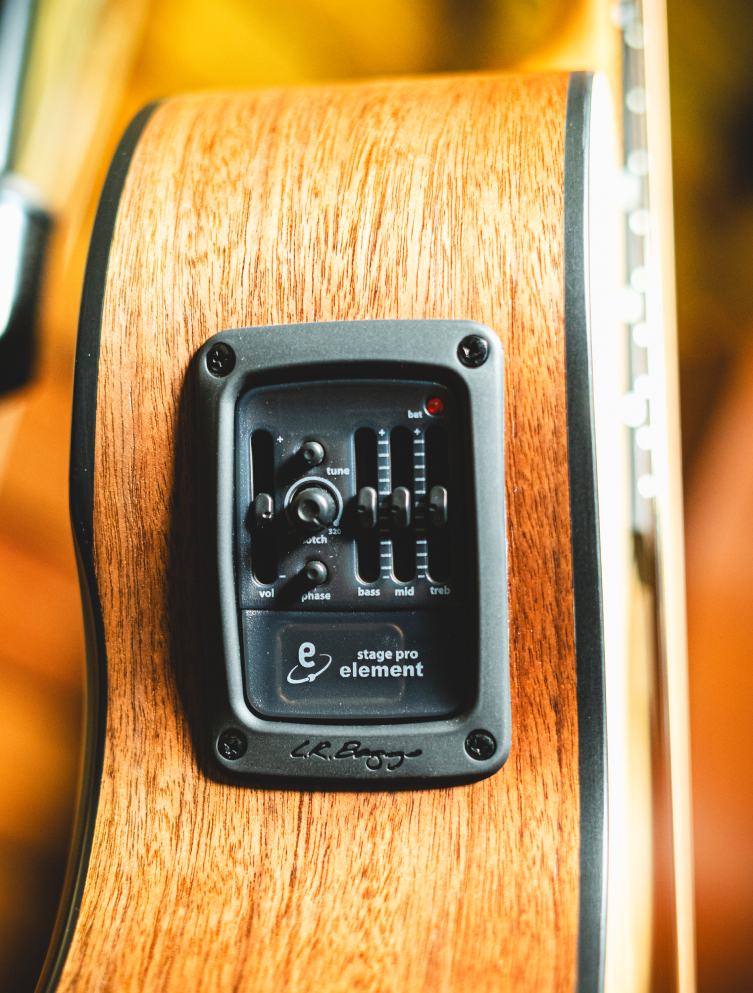
These preamps require a power source in order to work. Some cutting edge examples are beginning to use USB-charging to get a supply, but most often, it’s a trusty old 9v PP3 battery that you’ll need. Some preamp control sections have a battery compartment built into them, and others have the battery compartments located elsewhere within the guitar’s body.
In addition to giving the guitar signal a boost in volume, acoustic guitar preamps can also have other functions, so let me briefly cover those here. Remember, there’s a ton of variety out there, so not every preamp has every feature…
- Tuner: from a simple ‘standard tuning’ tuner to one that can do altered tunings (known as chromatic), having a tuner where you really need one - right on the guitar itself - is a great idea.
- EQ controls: some guitars have sliders for bass, middle & treble; others use specific frequencies. Others still have knobs for roughly the same jobs.
- Volume: it’s probably the most important control you can have!
- Notch Filter: A very handy and advanced feature, a notch filter is basically a very extreme EQ setting, like turning a specific frequency right down to zero. You dictate that frequency by turning the knob left and right, and the purpose is to get rid of feedback by locating the troublesome frequency and removing it by using the ‘notch’ to effectively dial that frequency away.
- Bypass/mute: often, you’ll find a small button which mutes your entire signal. Having control over this as a performer is extremely useful!
- Phase Shift: this feature reverses the phase, if microphone technology is present in the pickup system. It can be useful to help remove unwanted frequencies, be they of feedback or ground hum origin.
- Effects: It’s rare, but occasionally you’ll find preamps that have built in reverb and chorus effects, or something similar.
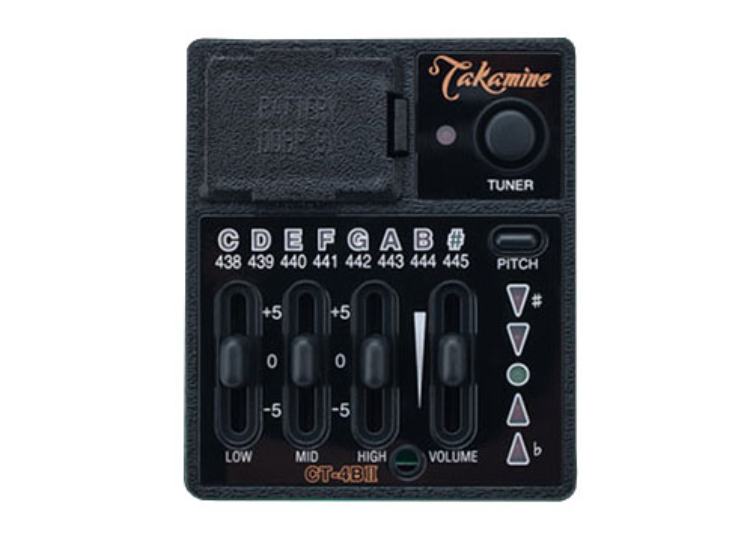
Acoustic Guitar Pickup Types
There are a variety of ways to ‘electrify’ an acoustic guitar. Some are simple, others less so: each has its own relative merits and drawbacks. Today, I’ll check out as many as I can think of, and give you my honest take on each.
Price will inevitably be a factor, and the less expensive pickup systems will understandably sound less ‘realistic’ and satisfying as the more expensive systems. That’s to be expected, as it is with all things in life. The cheaper options may still do a more than adequate job for you. I also feel that ‘expensive’ doesn’t always guarantee ‘better’: it just reflects the fact that the dearer one costs more to research, develop and then build.
Anyway, I’m getting away from myself! Here’s a description of each type of acoustic guitar pickup.
Magnetic Pickup
A magnetic pickup is essentially the same type of pickup as used on electric guitars and basses. Unlike most acoustic pickups, you will see this one sitting visibly under the strings, and also unlike most acoustic pickups, a magnetic pickup generally won’t have any sort of preamp. It just has an attached cable that comes from it (and therefore out the front of your guitar) and directly into whatever you’re using for amplification.
Magnetic pickups are mostly passive, so they generally require no additional power from batteries, unless you choose a sophisticated active version, of which there are increasingly more on the market.
You actually won’t find many of these pickups factory-fitted to acoustic guitars nowadays, because for one reason or another, piezo systems (more in a second) are preferred.
What they are, though, is practical: since most magnetic pickups are built to slide in and out of your soundhole, they are a very ‘reversible’ way of adding a pickup to a guitar temporarily, with no permanent modifying required. Some magnetic pickups are very affordable too, so the balladeer on a budget can win here!
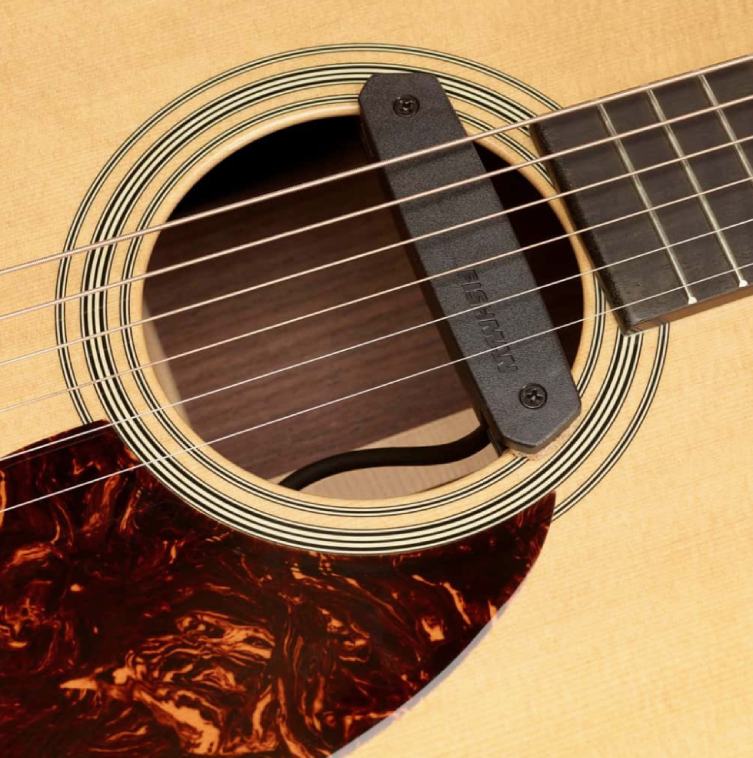
Sound-wise, the magnetic pickup (mostly) captures the strings only, so no body resonance is factored into the plugged-in sound. This means you aren’t getting a terribly realistic or detailed sound. This can work in your favour if you like slide playing or certain other styles, because the magnetic sound responds well to that.
I said ‘mostly’ there, because LR Baggs have technology in their M1 pickup that can capture body resonance too. Check it out if you want the best of this type of tech.
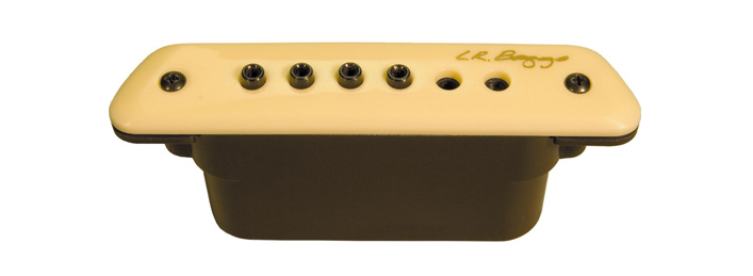
The Fishman Rare Earth and the Seymour Duncan Woody are other popular examples of magnetic pickups. If you want a simple, easy to fit and easy to remove pickup, then a magnetic soundhole pickup is for you.
Piezo Pickups
So, piezo pickups play a large role in the world of acoustic pickups. Whether you call them ‘pee-et-zoh’ or ‘pie-zoh’, what we are dealing with here is a set of crystals that are placed directly under each guitar string, normally in a strip below the bridge. The crystals themselves pick up the soundwave energy directly from the strings, so again, the body’s resonance is not really a factor in the final amplified sound.
Piezo pickups have a distinctive sound - sometimes described as a quack - which some people like and others don’t, but it has become a definite ‘sound’ in its own right.
I’d say that piezo pickups are the most popular types on the market: whether factory-fitted to new guitars or as after-market modifications, more people use these than any others. This is perhaps because the price-to-performance ratio is good, and because lots of piezo systems for good, feature-rich preamps. Every major company produces a piezo pickup system of some kind, but here’s a few popular choices:

Contact Mics
Microphones are the most ‘realistic’ way to capture acoustic guitar sounds, since they take the sound from the air, as opposed to the string before the sound is generated by the guitar’s body.
Standard mics are obviously impractical for such a task, though, so pickup systems have been developed that incorporate two types of small microphone instead of a magnetic or piezo pickup. One type of mic is a contact mic, which - as the name might suggest - picks up sounds that are in very close proximity to it. Several are generally used and these can be placed at various points within the guitar’s body. They’ll pick up natural vibrations from different areas of the guitar’s soundboard (it’s ‘top’), together making a very good approximation of that instrument’s actual sound.
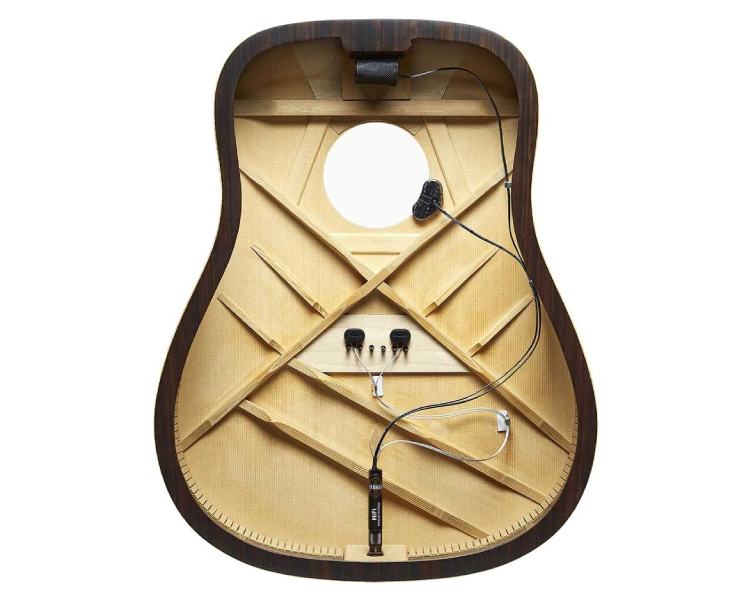
Because contact mics only gather sound from close by, they are quite resistant to feedback and are therefore pretty reliable to use inside acoustic guitars! A prime example of this type of technology would be Taylor’s ES2 Expression System, which they use with the majority of their guitars. It's unavailable on it's own though, but I'd say that's just a great excuse to buy a new Taylor guitar!
Contact mics have become particularly popular since the advent of percussive guitar techniques, where the player uses various parts of the guitar body to create rhythms and other percussive effects. Piezo and magnetic pickups are not particularly great at capturing those types of sounds, but contact mics are especially good at it.
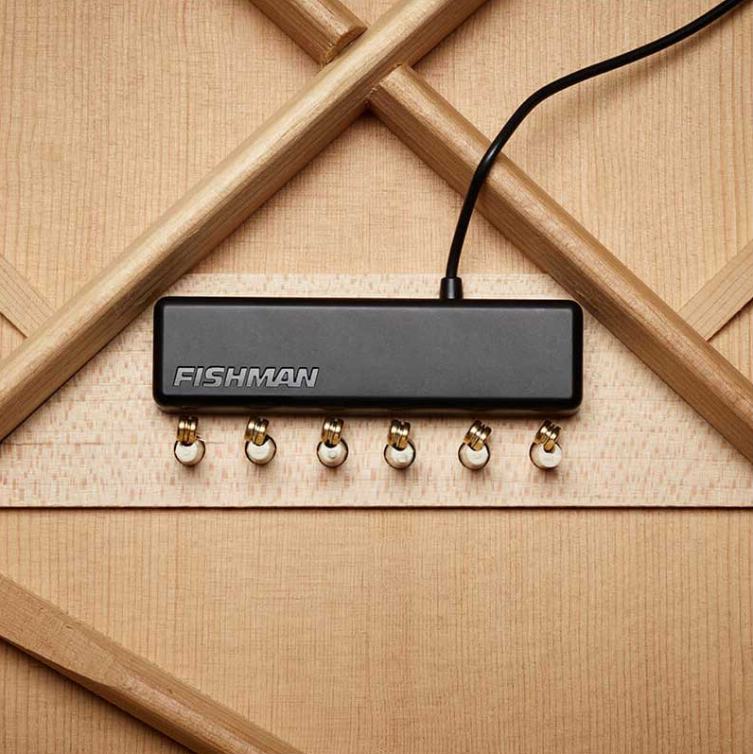
Soundhole Mics
An excellent quality sound can be had by putting a relatively sensitive microphone directly inside the soundhole. Attached to a little ‘gooseneck’ armature, these mics (usually condenser types) are fitted close to the soundhole and are directed outwards towards the strings. They’ll pick up lots of nuances, including the sound of your fingers or plectrum as you play, so you can achieve particularly realistic and detailed sounds with lots of expression.
The downside to this type of pickup is the same thing that makes them great: their sensitivity. They are prone to feedback and can amplify every clunk and slap you make, whether you mean to or not! They require a level of constant checking, for positioning as much as anything else, but their sonic rewards are pretty staggering.
Combinations, Dual Pickup Systems
What you might often find on higher-end guitars is a dual pickup system, made with both a piezo system and a microphone or two. You’re often able to blend each source until you get just the right sound, which allows the best of piezo - attack, clarity - with the best of microphones - detail, ambience, percussion.
Other dual pickup systems include the Fishman Rare Earth Blend, which partners a cardioid soundhole mic with a magnetic soundhole pickup. It’s a less usual combo but it works brilliantly, and even has its own mini battery on the back of the pickup!
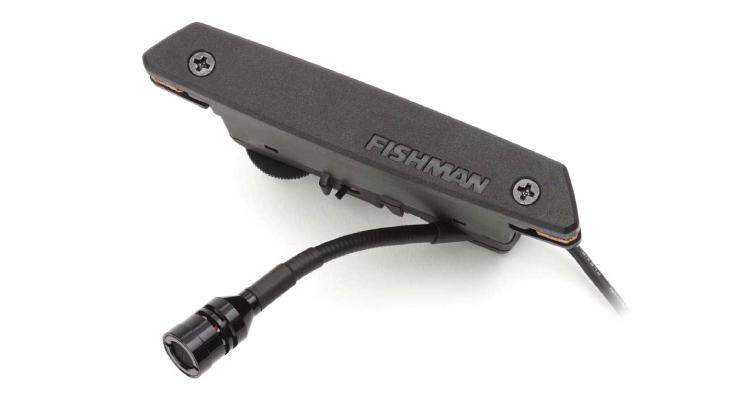
As mentioned earlier, Fishman’s Power Tap system combines a magnetic pickup with a body sensor to pick up on percussive tap techniques, so this is another example of a great combination of technologies.
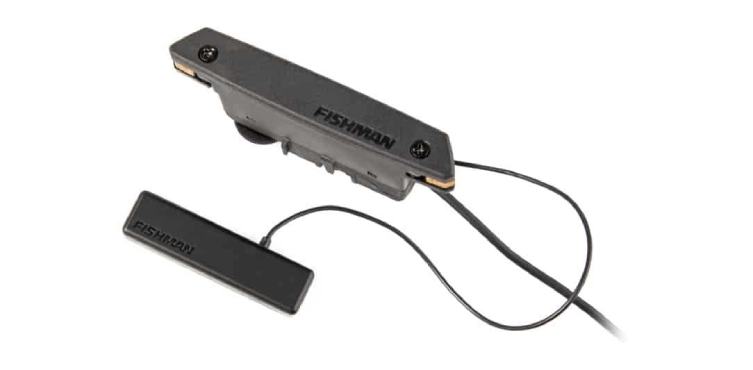
As with many things in life, combinations seem to bring out the best here. There isn’t one ‘best’ way to amplify an acoustic guitar, but several great ways.
Fitting a Pickup
If you’re looking to have a pickup system fitted to your guitar, all good guitar techs will be able to do this work for you, including our excellent techs at guitarguitar! It can be a fiddly job, so I wouldn’t personally try it myself. Leave it to a pro! Particularly with body sensors, placement is important in getting the best sound: trial and error isn’t maybe the way here.
Most of today’s pickup systems use discrete control panels, maybe of which are stuck with adhesive to the soundhole’s underside. This means that no terrifying holes are required to be sliced into the side of your precious guitar!
Also, many soundhole-based pickup systems with cabling that just trails out of the soundhole can actually be tidied up and ‘endpin mounted’, so that the cable from the pickup travels through the inside of the guitar to a special endpin that has a jack socket in it. This is a pretty standard thing, and again, most good techs can do this for you.
That said, the whole purpose of most soundhole pickups is that they are deliberately temporary! The cable running out the front of the guitar is a small price to pay for keeping your guitar intact and free from compromising modifications.
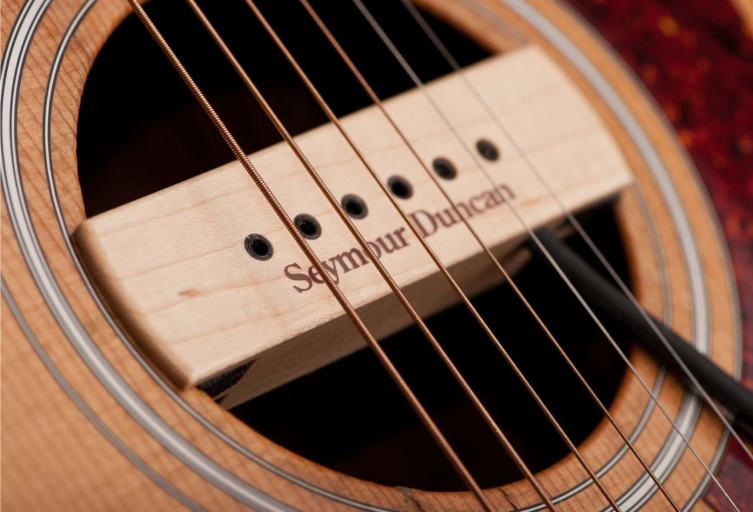
Have it Your Way
As you’ve read today, there are numerous ways to ‘plug in’ an acoustic guitar these days, and the right choice for you will be the one that sounds best to you, word best with your guitar, and is at a price that you can afford. If you aren’t sure, talk to us at your local guitarguitar, and test a few similar guitars with different pickup systems: there’s nothing like experience to help form proper opinions that mean something.
The right pickup system is out there waiting for you! Enjoy the hunt!
Click to View our Acoustic Pickup Systems




